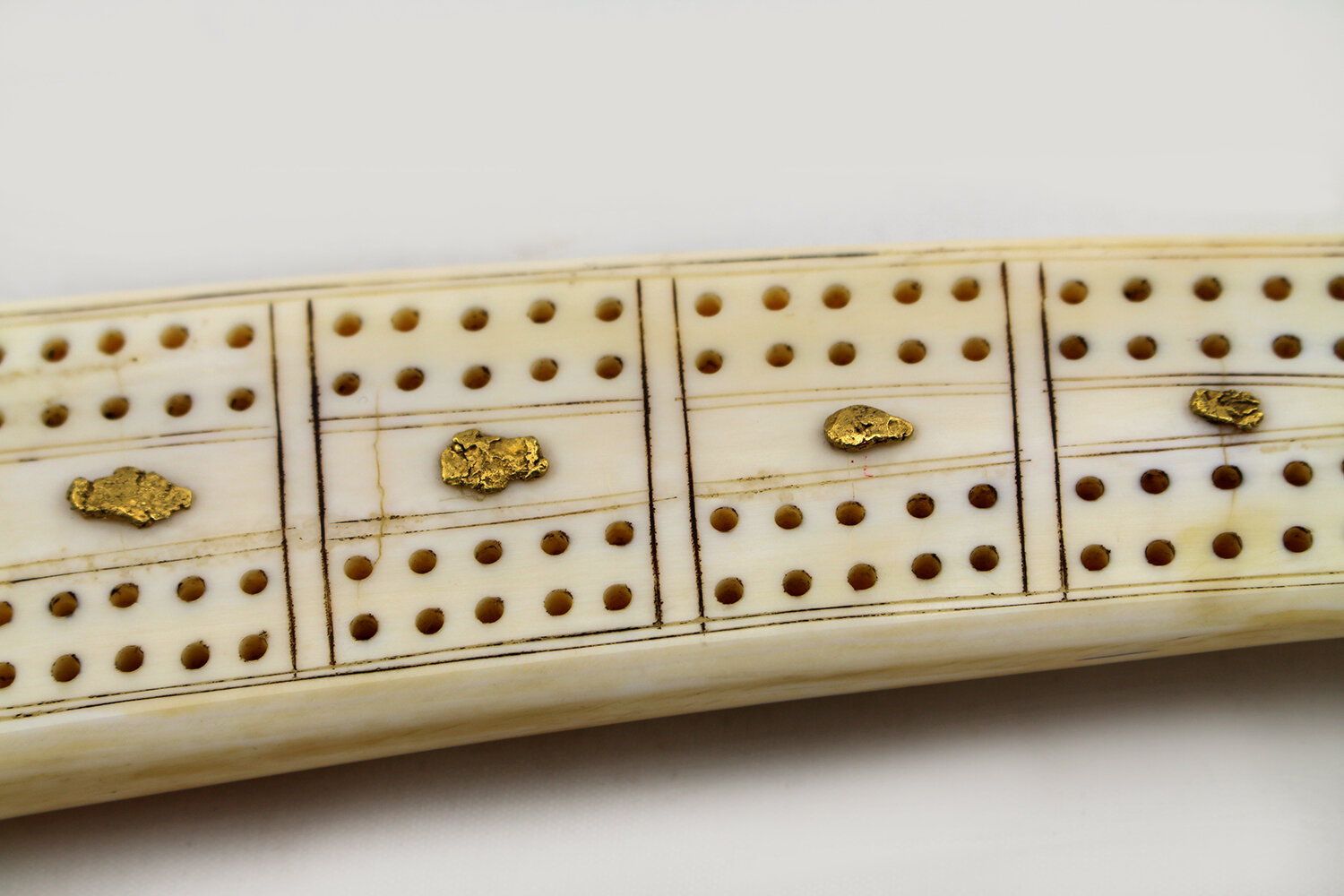Bullion Creek scrimshaw cribbage board on walrus tusk, the top inscribed "BULLION CREEK" and decorated with a stylized North West Coast bird and a figure of a gold panner, the bottom with 5 seals and a boat. Early 20th century
Provenance: Estate of Dr. Margaret (Marmie) Perkins Hess of Calgary
Size: 1 h x 16 w x 2 ¼ d in
P19518
This scrimshaw cribbage board was likely made during one of the final Gold Rushes in British Columbia or the Yukon, both having a location named Bullion Creek. Cribbage was an English card game well known by the 19th century and immortalized in Charles Dickens’ The Old Curiosity Shop. As this cribbage board contains gold nuggets it was likely made to commemorate a significant personal find.
The historic Gold Rush era has a nostalgic sentiment for many North Americans as it reminds them of the Wild West and days of great adventure. Gold Rushes took place mainly in the Western Cordillera region of North America from California up through British Columbia, the Yukon and into Alaska. They began in the mid 19th century when placer gold was being found in significant quantities in the streams and riverbeds up the West Coast. Placer gold refers to gold deposits in the sand or gravel in streams and rivers. The Gold Rush continued to the turn of the century by which time significant alluvial deposits (left by rivers or streams) were no longer being discovered.
Gold rushes began for many reasons, the first being the emergence of technologies that enabled mass circulation of information like newspapers, the telegraph, steamboats and other efficient transportation. Generally Gold Rushes began with either accidental discovery of gold by fur traders or prospectors and in large enough quantities to be commercially viable. Once a discovery was made word would spread, and with the new technologies it spread further and faster than ever before. This resulted in an influx of new prospectors and adventurers looking to cash in on the free (placer) gold.





